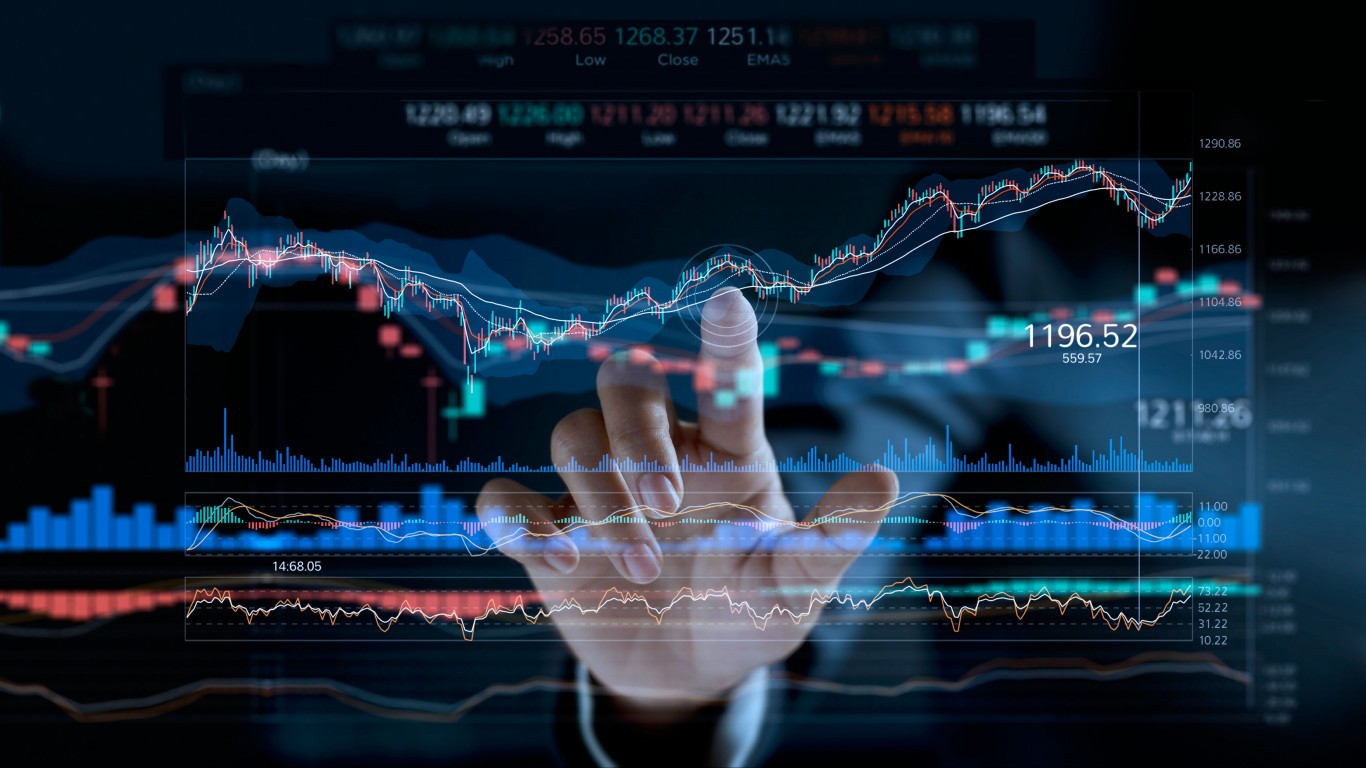
The troubles facing Intel Corp. (NASDAQ: INTC) have become headline news since the chipmaking giant reported second-quarter results last week. Is the United States really losing its position as the world’s leader in semiconductor technology?
One segment of the industry is flourishing, however. The segment that supplies the technology and machines that actually make the billions of chips that are sold every year continues to flourish. For the most part, these semiconductor equipment companies have had a strong 12-month run, even including the mid-March collapse caused by the COVID-19 outbreak. Their price recovery since March 16 has ranged from around 53% to nearly 85%. And it could be getting better.
The big question is whether expectations of future performance are too low or all the upside has been priced in. The equipment industry got a shot in the arm recently when the U.S. Congress introduced two new bills, one in the House and one in the Senate, that would pump $20 billion to $25 billion into rebuilding research and development in semiconductors and incentivize companies to build new foundries here in the United States. The legislation is still pending.
Intel’s problems have led to headlines about the demise of U.S. global leadership in semiconductor manufacturing. China is expected to invest some $150 billion over the next several years to develop the expertise and technology to develop a chip manufacturing powerhouse.
China does have a supply chain in place but lacks both the large chipmakers and suppliers of the equipment used to make chips. Industry veteran Alan Patterson told Forbes that China is 20 to 30 years behind in developing its manufacturing capabilities.
Here’s a look at current valuations for six semiconductor equipment companies and what the future could hold for them.
ASE Technology Holding Co. Ltd. (NYSE: ASX) is a Taiwan-based provider of semiconductor manufacturing services, including packaging and testing. With more than half its first-quarter revenues coming from those two businesses, it is well set up to take advantage of a total spend of $3.2 billion this year and $3.4 billion next year on assembly and packaging equipment and estimated spending of $5.7 billion on testing next year.
ASE closed at $4.97 on Monday, in a 52-week range of $3.17 to $5.70 and with a 12-month price target of $5.23. The stock trades at a discount of more than 12% to its price target and at a multiple of nearly 15 based on its estimated 2021 earnings. ASE pays a dividend yield of 3.4% (payment of $0.16 annually).
Teradyne Inc. (NASDAQ: TER) is based in Massachusetts and develops and sells automatic semiconductor test equipment around the world. Sales totaled $2.3 billion in the 2019 fiscal year and have amounted to more than $1.5 billion in the first half of 2020.
The stock closed at $88.32 on Monday, just 2.6% below its 52-week high and above its price target of $85.88. Based on the closing price, Teradyne trades at a multiple of more than 22 times expected 2021 earnings. Teradyne’s annual dividend is $0.40 (yielding 0.48%).
KLA Corp. (NASDAQ: KLAC) manufactures and services process control systems. More than half the company’s revenue is derived from sales to chip foundries (fabs). China (25%), Taiwan (24%) and Korea (21%) are its biggest customers, with Japan and the United States each contributing 11% to revenues in the most recent quarter.
KLA shares closed at $197.07 on Monday, about 19 times expected 2021 earnings. The stock’s 52-week range is $110.9 to $209.30, and the consensus price target is $189.30. Shares trade about 6% below the 52-week high. KLA pays an annual dividend of $3.40 (yield of 1.81%).
Lam Research Corp. (NASDAQ: LRCX) makes products used in thin film deposition, plasma etch, photoresist strip and wafer cleaning in the semiconductor manufacturing process. The company has embarked on a vision it calls Equipment Intelligence that will create “self-aware, self-maintained, and adaptive tools and processes” for companies building the next generation of chips.
The stock closed at $358.08 on Monday, about 6.5% above the consensus 12-month price target of $334.68. The stock’s 52-week range is $181.38 to $367.56, and Monday’s closing price is less than 3% below the high. At its current price, the shares trade at about 22 times expected 2021 earnings. Lam Research pays a dividend yield of 1.33% ($4.60 annually).
Applied Materials Inc. (NASDAQ: AMAT) makes and sells a variety of manufacturing systems used to make semiconductor chips. The company also makes products for manufacturing liquid crystal displays (LCDs) and organic light-emitting diode (OLED) displays. More than half the company’s sales are to chip fabs with the remaining 44% divided equally between DRAM and flash memory makers.
The stock closed at $63.01 on Monday, in a 52-week range of $36.64 to $69.44. The consensus price target is $70.08, implying a potential upside of 11.2%. At the current price, Applied Materials stock trades at 18.4 times expected 2021 earnings. The company pays an annual dividend of $0.88 per share (yield of 1.45%).
ASML Holding N.V. (NASDAQ: ASML) is based in the Netherlands and is the largest company by market cap in this group. In its most recent quarterly report, ASML said it shipped nine Extreme Ultraviolet (EUV) systems and recognized revenue of about $3.9 billion. The EUV systems generated about $2.9 billion of that revenue while service and options sales accounted for the rest.
The company’s stock closed at $381.78 on Monday, in a 52-week range of $191.25 to $402.87. Analysts have a consensus price target of $381.97 on the stock, and the shares traded at about 5.2% below the 52-week high. They also traded at about 48.5 times expected 2021 earnings. ASML pays a dividend yield of 0.76% ($2.92 annually).
Thank you for reading! Have some feedback for us?
Contact the 24/7 Wall St. editorial team.

 24/7 Wall St.
24/7 Wall St.



